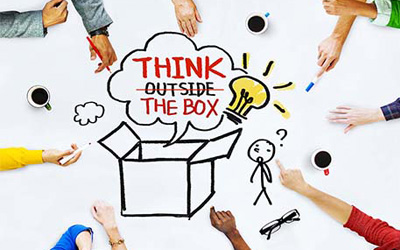Think INSIDE the Box
 Outside of the box is celebrated as the way to come up with new solutions, get creative and break out of a rut. However, constraints facilitate a better creative process. Why? It takes brainpower, energy and effort to decide among unlimited options and possibilities. Constraints minimize decision fatigue and get people focused on the goal rather than the options. Creativity is enhanced with constraints. Limitations reduce uncertainty (which limits cognitive processing) and expand our conceptual scope, so we can consider more possibilities and ideas. What seems to limit you can liberate you. Here is a TED Talk from Phil Hansen, an artist who developed hand tremors. Instead of giving up his art, he found new ways to express his artistic talents. He makes a case for the value of putting yourself inside a box! Create limitations to think inside the box:
While it may seem counter intuitive to put constraints in place, they create boundaries that enable better solutions and more creative output. Remember, limits liberate! |
